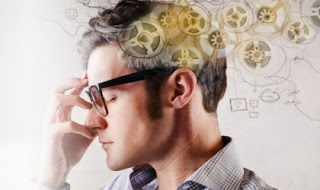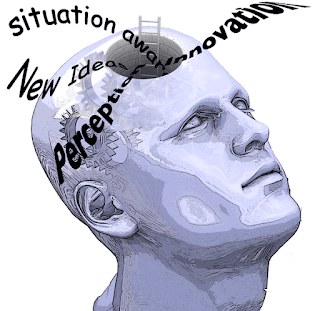What Kind of Liar Are You?
I am not perfect, nor do I strive to be. But I do strive to be honest, fair and well intentioned. So you might imagine the shame and surprise I felt recently when I discovered I lie.
to
In my anxiety over being late to teach a class, I parked in a lot with an expired permit. I was hoping I could keep the parking patrol at bay by altering and displaying an expired permit until I had enough time to purchase a valid permit. Ironically, it never dawned on me I was telling an actual LIE-LIE, until I returned from class to find two wheel locks on my car and a neon-colored decoupache made of my car windows that served as the backdrop to big, bold black letters reading: "You have falsified information." Oh, and a small citation of 50k . It was a modern-day tar and feathering attack meant to evoke humiliation. It worked.
Unconsciously I minimized the parking permit policy as annoying and unnecessary, and, therefore, toyed with its importance. I was unaware of all the policies and underestimated the importance of adherence. I disagreed with the policy but the university had the authority. So I deceived the institution, deeming it socially acceptable. It didn't harm anyone, and, I rationalized, bending such insignificant rules enforced by law, governmentor institutional policy seemed innocuous and perhaps even deserved.
Still, it was a lie. And it got me thinking: Do lies come in shades of gray, degrees, if you will, making some lying socially acceptable, even a virtue in the right social context? If so, who determines these parameters and what motivates people to lie?
"There is hardly a legitimate everyday vocation or relationship whose performers do not engage in concealed practices which are incompatible with fostered impressions," said the late Sociology pioneer, Erving Goffman (1959). Paul Ekman, a pioneering psychologist of emotions and facial expressions said, "Lying is a central characteristic of life. Lies can be humane; even altruistic. Some social relationships rely on lies to preserve the myths they enjoy" (1988). Case in point, Santa Claus and the Tooth Fairy.
Ekman defines lying as a deliberate choice to mislead a target without notifying the intent to do so. He identifies two forms of lying: Concealment, leaving out true statements, and Falsification, presenting false information as if it were true. Ekman further identifies other, less direct ways of lying:
1. Misdirecting - Identifying an emotion but not acknowledging what caused it.
2. Telling the truth falsely, or telling with such exaggeration or humor that the target remains misled
3. Half concealment (admitting only half the truth) to deflect the target's interest in what is still concealed
4. Telling truth in a way that is opposite of what is said
5. Telling the truth with a twist.
Lying in the Office
Take a look around your office. How many lies are being told each day? Does your boss take the "team" to lunch on the corporate card, only to claim it as a client lunch on an expense report (Falsification)? Has an employee ever confronted you about potential lay-off concerns and you remain silent instead of confirming or denying rumors (Concealment) or play coy to what you know (Half Concealment) and only days later lay-off the employee? Do you say you're happy for a colleague who has been promoted while you feel resentment that you weren't instead? Perhaps you're in charge of your company's corporate communications and convey the company's financial standings to employees with a positive spin, despite knowing the opposite is true.
Take a look around your office. How many lies are being told each day? Does your boss take the "team" to lunch on the corporate card, only to claim it as a client lunch on an expense report (Falsification)? Has an employee ever confronted you about potential lay-off concerns and you remain silent instead of confirming or denying rumors (Concealment) or play coy to what you know (Half Concealment) and only days later lay-off the employee? Do you say you're happy for a colleague who has been promoted while you feel resentment that you weren't instead? Perhaps you're in charge of your company's corporate communications and convey the company's financial standings to employees with a positive spin, despite knowing the opposite is true.
Lying At Home
What about at home? Do you promote the Santa Claus mythology with your children? Do you tell your husband nothing's bothering you when he asks, or say you're not feeling well instead of acknowledging you're upset with him? Are you having an affair? Are you flirtingon the internet and concealing it or minimizing the relationship and feelings you're experiencing? Are you canceling dinner plans citing the absent babysitter as an excuse, when you simply don't want to attend?
What about at home? Do you promote the Santa Claus mythology with your children? Do you tell your husband nothing's bothering you when he asks, or say you're not feeling well instead of acknowledging you're upset with him? Are you having an affair? Are you flirtingon the internet and concealing it or minimizing the relationship and feelings you're experiencing? Are you canceling dinner plans citing the absent babysitter as an excuse, when you simply don't want to attend?
However trivial, important or socially altruistic, these are all lies. Yet we harshly judge others by their lies. Individually and culturally we tacitly measure how bad or understandable a lie is. We use our value systems and experiences to judge why people lie and to determine if we deem it justified. We debate: "Would I want to know if my spouse cheated on me once a long time ago?" or "Do I want to know if my significant other's mother thinks I am a lousy homemaker?" We wonder if we should divulge our own indiscretions. And we look to our politicians, religious leaders, teachers, sports figures and celebrities to uphold a moral code that, we ourselves, cannot uphold. Yet, we shame them. We boycott them. We demand resignations and explanations.
Why we lie is fascinating. But why we judge is ironic. We lie to self-preserve, for self-presentation, to gain something (status, attention, goods, money), and, yes, we lie for altruistic social reasons. But aren't these some of the very same reasons we judge others for their lies, to position ourselves as good and moral (self-presentation), to gain something (status, notoriety), self-preserve (establish a feeling of superiority, ‘better than or good-enough'), and social reasons (fitting in)?
As for my bold-faced parking permit lie, admittedly, I didn't feel bad about it even after being ticketed because I considered it a trivial infraction. It wasn't until a highly regarded professor witnessed the visually embarrassing aftermath of my lie that I felt shame. You see, my nicely packaged "press kit" of how I wanted a colleague to see me had been tarnished. So when he asked if it was my car, the only way to self-preserve my self-respect in that moment was to tell the truth. Perhaps Ghandi said it best when he said, "Happiness is when what you think, what you say, and what you do are in harmony."


















